What is slug onion and how to grow it?
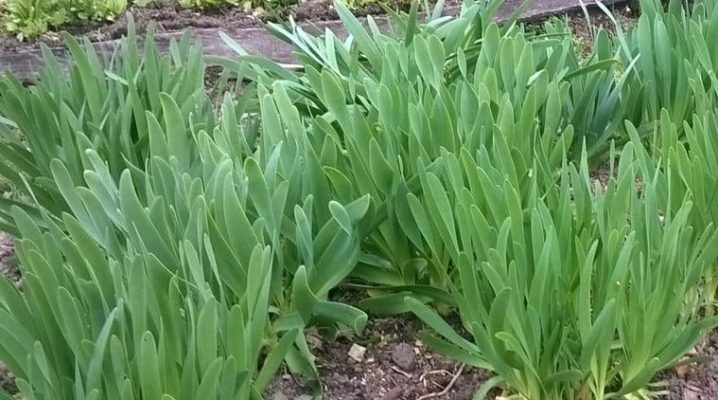
The leafy slime onion has many useful qualities, therefore it is very popular among gardeners. You can grow it in any conditions. The main thing is to provide the plant with proper care.
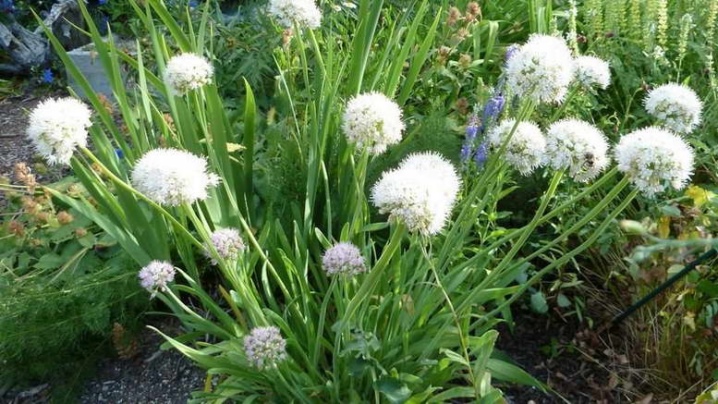
general description
Slime onions are a strong perennial with flat, garlic-like leaves. With proper care, onions stay green throughout the summer months. By autumn, arrows appear on it, decorated with light purple inflorescences in the form of neat balls. At this time, the bow looks especially beautiful. The plant blooms a year after planting. Flowering takes several weeks.
This plant got its name due to the fact that a transparent juice resembling mucus is released at the place of the leaf cut. This type of onion is also called drooping or Siberian.
In the wild, slug grows in cold regions. But people have learned to grow it in almost any conditions. Gardeners often plant such plants in flower beds. Slime onions can be used to decorate alpine slides or create beautiful low fences. These plants go well with echinacea, sage and delphinium.
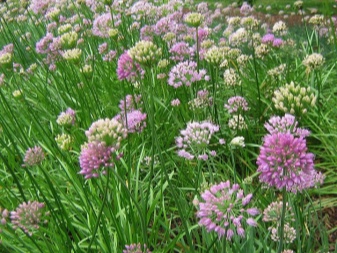
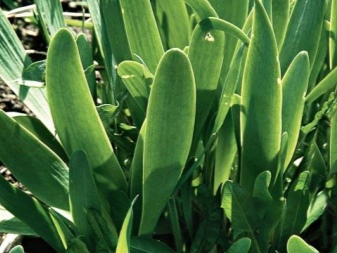
As a rule, people eat delicate green foliage. It contains many vitamins and minerals. Eating green foliage is useful for people with vitamin deficiency, gastrointestinal problems or low hemoglobin levels in the blood. You can add this product to a wide variety of dishes. It is usually used in the preparation of soups, sauces, pies, as well as meat and fish.
It should be noted that Siberian onion contains very few essential oils. Therefore, its taste is not at all bitter. Some people note that onion foliage has a slight garlic flavor and aroma.
Onion rhizome can also be used for food. In its appearance, it differs significantly from a regular bulb. But it tastes very good. Everyone can eat this product, except for allergy sufferers and pregnant women.
Onions are also used in cosmetology. The slime from its leaves is commonly used to make hair masks. This product stimulates their growth and also improves the condition of the hair. In addition, face masks are also made from it. These home care products help restore skin and make blemishes less noticeable. Mucus that is secreted at the site of cuts or fractures can be used to heal wounds.

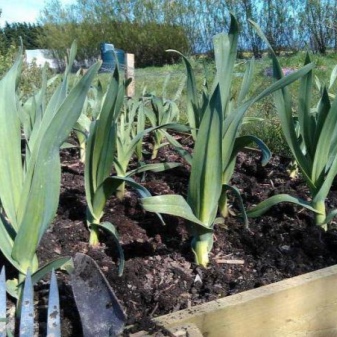
Popular varieties
There are now many different varieties of slime. Each of them has its own characteristics.
- "Salad". The greens of such plants are very juicy and tasty. Onions ripen about a month and a half after planting in open ground. From one bush, you can collect 2-3 kilograms of the crop. Onion foliage is ideal for making fresh salads and aromatic sauces.
- Green. This variety is unpretentious and easy to care for. It tolerates both drought and severe frosts well. Onions rarely get sick and are attacked by pests. You can collect a lot of greens from one bush.
- "Dwarf". This type of onion is small in size. It should be remembered that it is not possible to grow it everywhere, because the plant does not tolerate sudden changes in temperature.
- "Leader". This onion grows very quickly. Its foliage is green and juicy. You can eat it within a month after disembarkation. The onion tastes very good.It can be added to a wide variety of dishes during cooking.
- Simbir. This variety has good cold resistance. It contains many vitamins. Therefore, it is useful for people with vitamin deficiency and weakened immunity.
- "Waltz". This type of onion is most often used to decorate the site. Its foliage is twisted in neat spirals. This looks pretty unusual. Such onions look beautiful both in vegetable beds and in flower beds.
- "Broadleaf". This bow has flat and wide leaves. They become suitable for consumption within 20 days after disembarkation. The dark green foliage keeps well and does not taste any less tasty even after processing.
- "Well of health". As the name implies, this plant contains a large amount of vitamins. This variety is early. The greens of such onions have a pleasant pungent taste and a rich garlic aroma.
- "The charm". Such a bow has wide and long foliage. It differs from other varieties in its inflorescences. They are white. During the flowering period, such an onion looks very beautiful.
Since all of these varieties are quite popular, it is very easy to find them on the market. Several different types of plants can be placed on one site at once. They go well with each other.

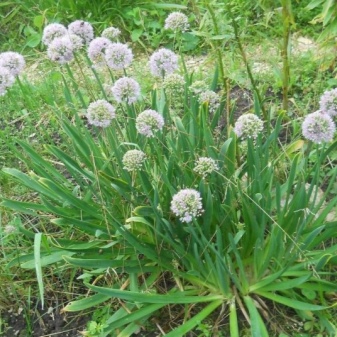
Landing
Planting this type of onion in your area is quite simple. Therefore, even novice gardeners are engaged in breeding it.
Seeds
The easiest way to grow onions is by using seeds. They can be either purchased or collected on the site in the fall. In order for the plant to germinate without any problems, the planting material is treated with a simple solution of potassium permanganate. After that, the seeds are washed with water and placed in a container with a stimulant overnight. After finishing with processing, the grains must be dried.
When planning to plant onions in the open field, you need to prepare the ground for it in advance. It grows best in peat bogs. The beds are recommended to be located in a sunny area. In the fall, the site is dug up, organic fertilizers are applied to the soil. In order for the onion to grow healthy and strong, the gardener needs to follow the rules of crop rotation. It is best planted after nightshades, cabbage or cucumbers. It also grows well in the area where green manure used to be. But where other varieties of onions or garlic grew before, you should not plant a slime.


Sowing is carried out in the spring. This should be done after the snow melts. To do this, you need to make several identical grooves in the garden. Each of them should be no deeper than two centimeters. The distance between the rows should be between 30-40 cm. After sowing, the bed is covered with plastic wrap. In such conditions, seedlings germinate much faster. It will be possible to remove it only after the first shoots appear on the site.
It is recommended to thin out emerging seedlings. The distance between adult plants should be 15 cm. In this case, they will have enough nutrients for normal development.
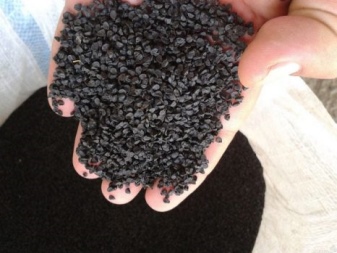
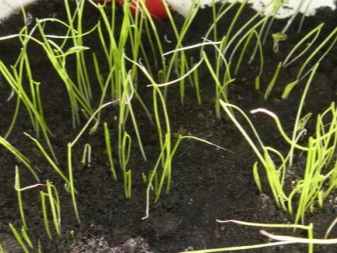
Seedlings
This planting method is also popular with gardeners. Sowing seeds for seedlings is done at the very beginning of spring. Prepare them in the same way as in the previous case. Seeds are planted in small pots. The grooves should not be too deep. Before planting seeds, the soil is well watered with warm water. After planting - sprayed with a spray bottle.
Next, the container is covered with a transparent film or glass. It is removed only after the first shoots appear in the pots.
Planting young seedlings in the ground is in the middle of spring. It is worth remembering that the culture is afraid of frost. Therefore, we must wait for the temperature to rise to 13-15 degrees. At this time, the seedlings will already become quite large and strong. To make the seedlings easier to adapt to frost, they need to be hardened in advance. To do this, from the first days of spring, pots of herbs are taken out into the yard. To begin with, it is left there for just a couple of minutes.In the future, the seedlings can be outdoors all day.
It is worth replanting young plants in the beds prepared in the fall. The soil should be loose and nutritious. The beds, as in the previous case, are located at a distance of 30-35 centimeters from each other. After planting seedlings, the soil must be watered with warm, settled water.
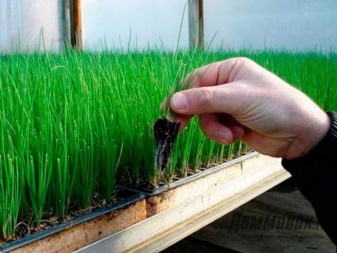

By dividing the bush
This method of propagation of green plants is suitable for shrubs from the age of three years. They must be healthy and strong. It is best to divide the bush in the fall. In this case, by the spring, he will already give the first greens.
The process of dividing a bush consists of a few simple steps.
- First you need to dig a bush out of the ground. It is recommended to do this in the evening.
- Next, the bush must be divided into several parts. This can be done with a sharp knife or shovel. Usually the onion is divided into 2-3 parts.
- The roots need to be slightly shortened. You should not cut them too much. This will only harm the plant.
- After that, individual parts of the bush must be planted in the holes prepared in advance. They shouldn't be too deep.
- Next, each bush needs to be sprinkled with a small amount of earth and watered well.
Such a transplant has a positive effect on the condition of the plant. After this procedure, the onions bear fruit more abundantly. The flavoring characteristics of greens are significantly improved.
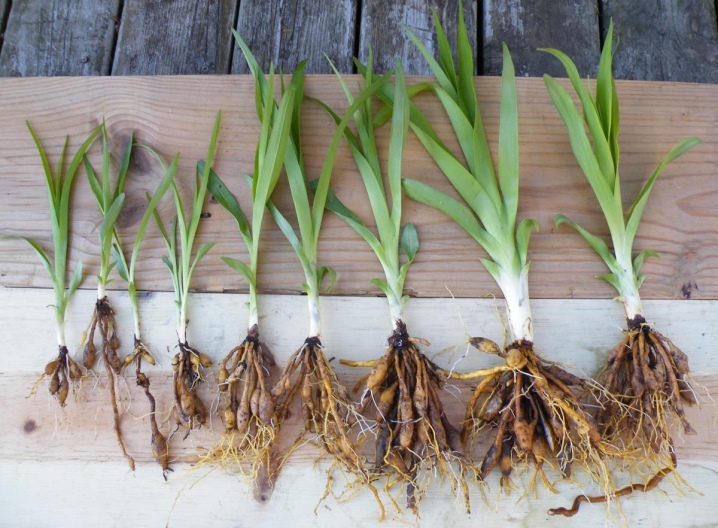
Care
Slime onion is a rather unpretentious plant. But he also needs some care.
Watering
Regular watering affects the taste of the onion. If the plants do not get enough moisture, their foliage will become tough and tasteless. Therefore, it is very important to monitor the condition of the soil. It should not dry out and crack.
It should be remembered that slug reacts poorly to excess moisture. It is important to ensure that moisture does not accumulate at the roots. This can lead to root rot and death of the onion.
It is recommended to water the plants with warm water. This is best done in the early morning or evening. At the end of August, watering should be stopped.

Top dressing
For the first time, onions are fed at the beginning of the growing season. During this time, gardeners usually use organic fertilizers. It can be mullein, diluted in a ratio of 1 to 10 or chicken, diluted in a ratio of 1 to 20. You cannot use more concentrated products. It is also best to apply organic fertilizers in the evening. After feeding, the slime onions are watered abundantly.
In the future, the plants can be fed with potassium and phosphorus. This is usually done after cutting the green foliage. Such feeding allows plants to recover quickly. In summer, onions can also be fed with urea.
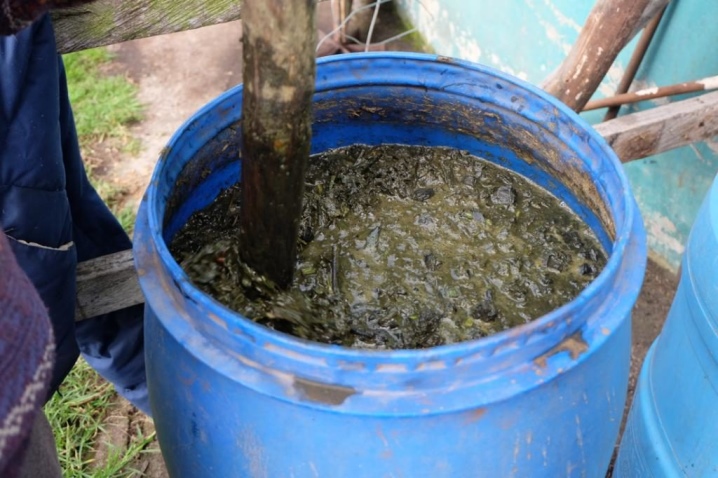
Loosening and mulching
So that a dense crust does not form on the surface of the earth, it is recommended to loosen the soil well after watering. After weeding, nutrients and air flow more easily to the rhizome. In addition, regular loosening prevents weeds from growing.
To spend less time weeding the area, the beds can be mulched. Usually humus or dry grass is used for this purpose.
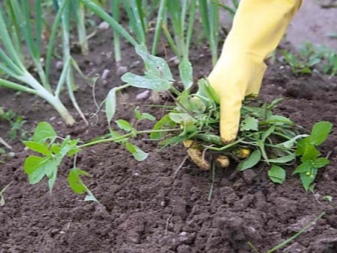
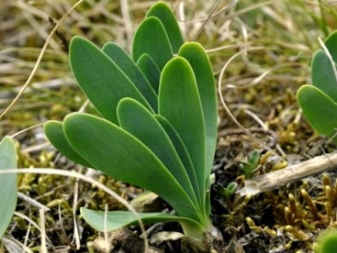
Transfer
If the onion grows for a long time in one area, over time it can be transplanted to another place. In addition, home-grown slime can be grown on the windowsill. In this case, tasty greens will always be at hand.
It is best to replant onions in the fall. Plants 2-3 years old are suitable for this purpose. To begin with, the foliage is cut from the bushes. After that, they are carefully dug out, being careful not to damage the rhizome. Next, the onions are transplanted into small pots or containers with prepared soil. The container is taken to the basement or to the balcony. There, the plant can adapt to new conditions. After a couple of days, it can be brought into the house. Green foliage, suitable for consumption, will appear on it in a month.
Onions growing on the windowsill need to be watered regularly. It is also important to ensure that weeds do not appear next to it.
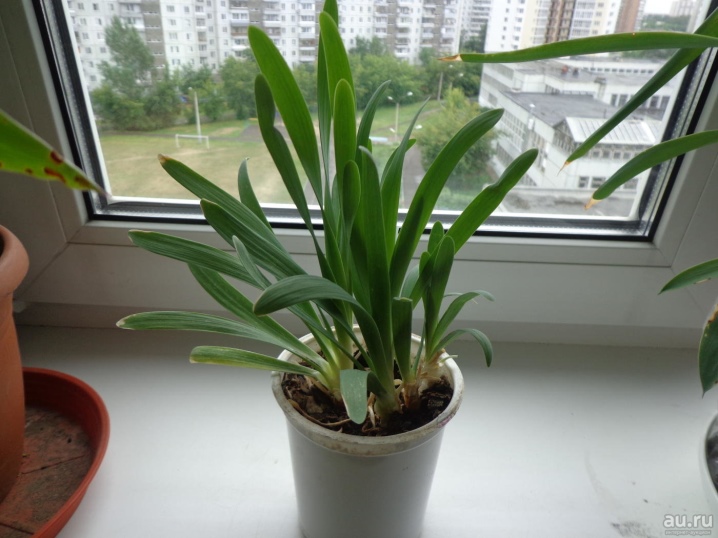
Diseases and pests
Slime onions are rarely attacked by pests. The onion fly is dangerous for this plant. But it is quite easy to deal with this pest.
Usually plants are simply treated with soapy water. For its preparation, a piece of laundry soap is rubbed and diluted in 10 liters of warm water. If there are a lot of pests on the site, instead of a folk remedy, you can use stronger insecticides. To protect the beds from these pests, plants can be dusted with wood ash or tobacco dust.
To protect plants from fungal diseases, they are sprayed with a solution of potassium permanganate. The same product is used to process sections.

Collection and storage
Gardeners collect green feathers several times per season. To get more harvest, it is recommended not to cut the leaves, but to pluck them. In this case, the bow recovers faster.
You can use this type of greenery all year round. Green leaves are regularly cut and harvested in summer. New sheets quickly appear in place of the cuts. This happens in a couple of days.
Onion foliage can be pickled and fermented. But food prepared in this way is not very healthy. Therefore, it is worth harvesting green foliage in one of the following ways.
- Freezing. The collected onions are washed under running water, dried, and then collected in bulk bundles and placed in plastic bags. Before use, such a product is thawed at room temperature, and then added to any suitable dishes. Onions can be stored in the freezer for several months. It is placed in the refrigerator only for 2-3 weeks. It is also stored in small bags.
- Freeze in oil. Freeze onions also need to be washed and dried. After that, the green foliage must be finely chopped. The greens prepared in this way are placed in plastic containers, and poured on top with any vegetable or butter. In this form, the product is sent to the freezer. Such blanks can be used for dressing salads, or in the process of preparing hot dishes, as well as delicious pastries.
- Drying. Some gardeners prefer not to freeze green plants, but to dry them. The foliage is pre-soaked in a solution prepared from a liter of water and 2 tablespoons of salt. After 5 minutes, the foliage is crushed and sent to the oven, preheated to 50 degrees, or to a special dryer. The products prepared in this way are stored in paper bags or glass jars. You can use dried onions to make various soups.
After processing, green plants do not lose their beneficial properties. Therefore, foliage can be harvested for the winter in large quantities.
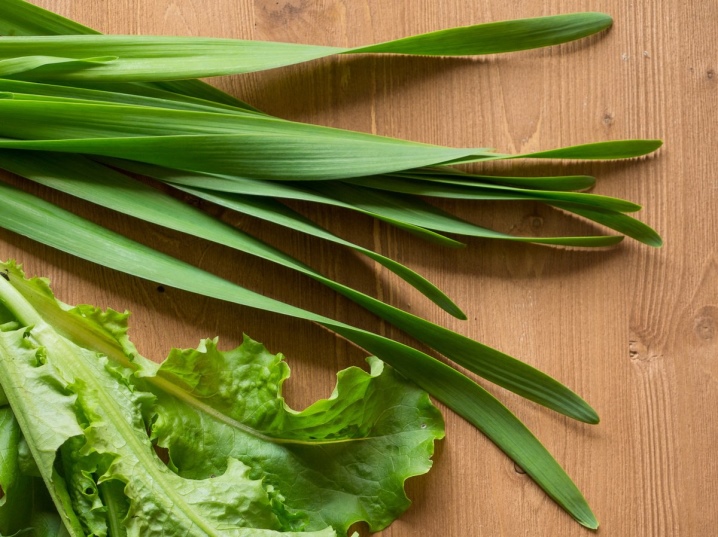
Even a novice gardener can grow onions on his site. The main thing is to follow simple advice from more experienced people.













The comment was sent successfully.